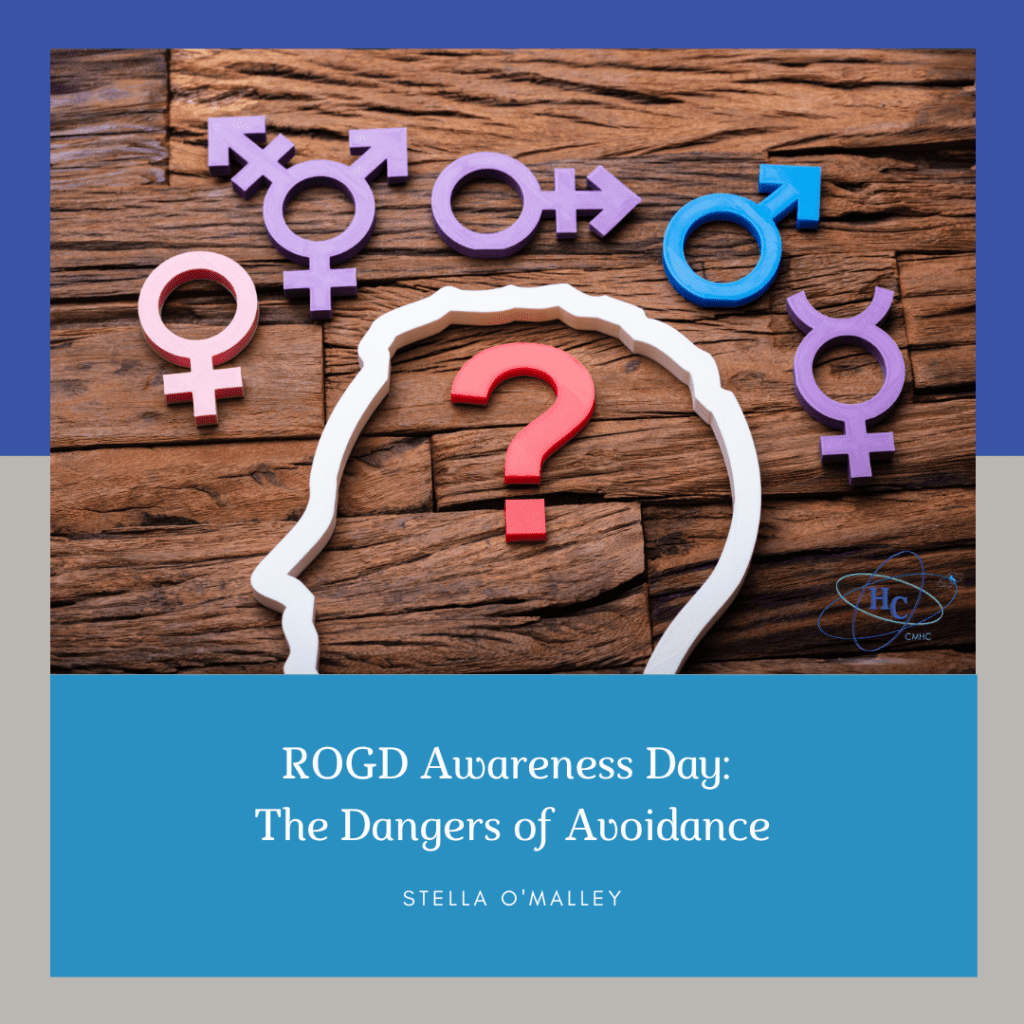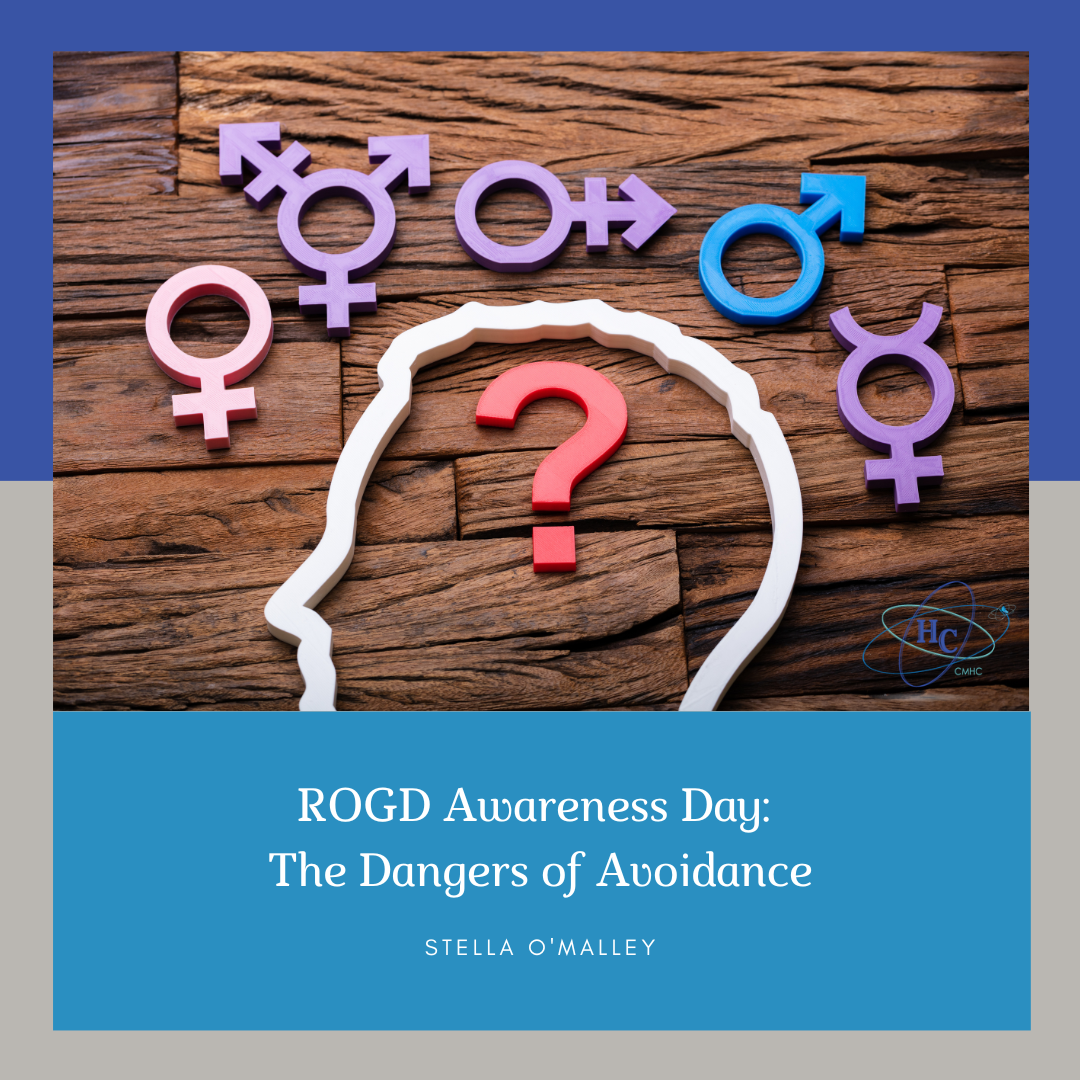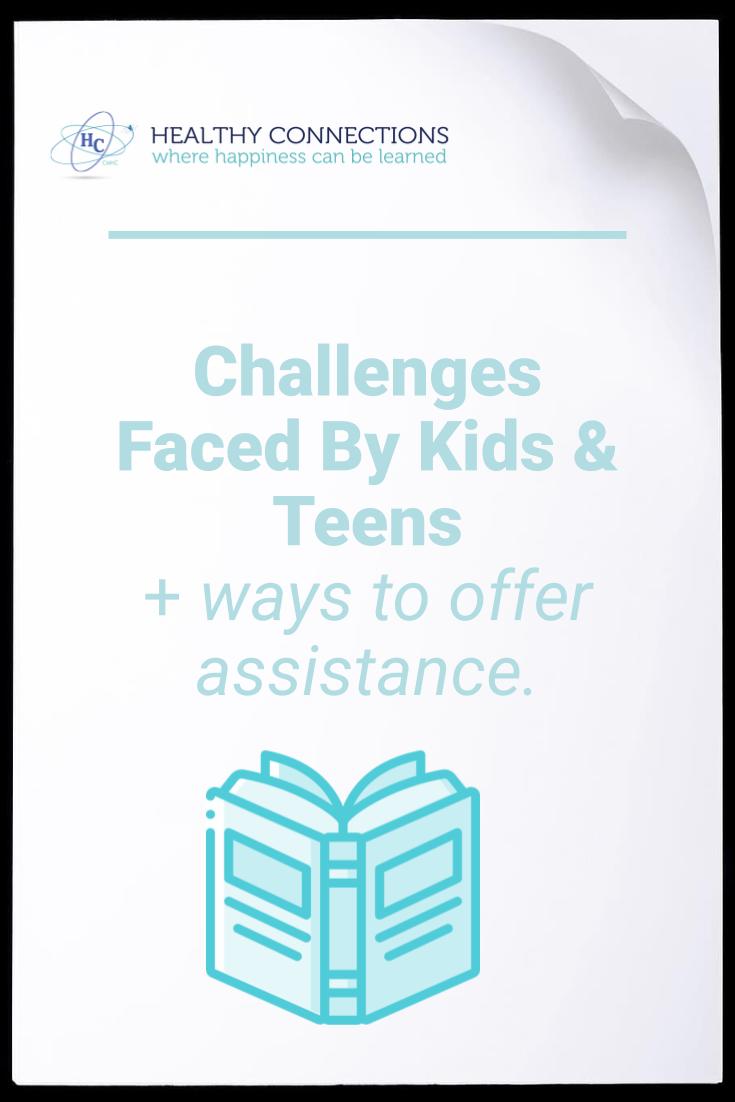
Healthy Connections would like to share this blog by Stella O’Malley:
One significant finding from the recent parent survey that I carried out is that many parents regret having avoided addressing their child’s gender dysphoria. The general trend is that parents know that their child is clever, they know their child is loved and well-raised, and they believe that this will be sufficient material for the ROGD youth to pull themselves out of this crazed obsession. But it often isn’t. In fact, we underestimate gender dysphoria at our peril.
Just like anorexia, the ROGD young person can be very easy to live with – as long as you do not interfere with their obsession. The anorexic teenager can be perfectly compliant, interesting, and engaged in life but all the while they are using their fixation on not eating as a way to cope with difficult emotions. ROGD youths are the very same.
This leads parents into a false sense of security. While the parent bites their lip and has a constant underlying worry that the child might do something drastic, but reassures themselves that they seem in good enough form, the ROGD youth is actually carefully and continuously cultivating a false persona. This nurturing tends to happen online but also unfolds in school amongst other ROGD young people.
The false persona that the ROGD young person creates tends to be an idealised version of their real selves. If the ROGD kid is shy and awkward, their sought-after persona is often brash and confident. If the ROGD young person is male, he might, for example, covet gentleness and femininity, and as it is very difficult to be a feminine boy, the only way that he can conceive of being a gentle, sensitive, caring person is to become a girl.
The ROGD young person might play video games in their neo-identity or make picture boards or other activities involving creating a new identity for themselves that is often a long way from reality. Many of us naturally dream of becoming a better version of ourselves. We often recount stories where we appear more witty and articulate than we were, and that’s perfectly normal. As humans, we are constantly striving to improve our lives, so it makes sense that we would also want to enhance who we are.
With ROGD however, it goes a good deal further than that. With ROGD, the young person’s new identity has become an all-consuming obsession that holds the promise of a much better life. In this new life, the ROGD individual believes that they will be able to live authentically and comfortably with themselves. Everything will be easier when they can be this new person.
Examining the anorexic mindset reveals that individuals with anorexia often believe their problems will be solved if they can just lose a certain number of pounds. Then when they’ve lost those pounds, the feeling of contentment doesn’t last long and so they continue to chase the next high by creating a new goal of losing just a few pounds more. Likewise, the ROGD mentality is that life will be better just as soon as x happens. This x might be when their parents call them by their new name, or it could be when they manage (with a binder) to achieve a flat chest, or when a stranger communicates with them in their new identity. The high seldom lasts though and as soon as the ROGD young person has got their high through a name change, or physicality, or other people’s recognition of their new identity, then they move on to another goal. And this is how everything escalates.
Meanwhile, the parents are often completely unaware of the mind games of their child because they are absorbed in their own mind games – the parents are very understandably hoping that this beast that has overtaken their lovely child will just go away. None of it makes sense. It feels too insane for many parents to take seriously. The child is typically extremely intelligent – too intelligent to fall for the paradoxical nature of gender ideology – and the parents hopes that by simply avoiding the issue this will give the child the time and space to come to their senses.
Why do we avoid things?
Imagine an internal thermometer that measures your discomfort in real-time, with zero representing calm and collected, and one hundred indicating you’re on the brink of breaking down from anxiety, fear, and stress. The higher the reading, the greater your urge to escape or reduce the discomfort. This is a natural response, as no one likes feeling uneasy.
The problem isn’t the discomfort itself, but how we react to it. By avoiding challenges, we teach our brains that the only way to handle difficult situations is to escape rather than face them. This reinforces our avoidance instincts. The more we avoid, the more we create a continuous cycle of discomfort that slowly affects every part of our lives.
Relying continuously on psychological avoidance takes a significant toll, impeding our ability to lead a courageous and fulfilling life and stunting our opportunities for growth. By evading discomfort, we forfeit valuable learning experiences and the opportunities they provide.
A key aspect of avoidance is that the avoider often becomes a genius at ensuring everyone else complies. The ability of the mentally ill person to utterly silence all their loved ones on any given issue never fails to astonish me. People who are deep in avoidance have a powerful ability to terrify everyone else into silence, without even saying a word. It’s hard to explain but it can feel very tangible once it has been experienced. It reminds me of a young anorexic I knew at the breakfast bar, huddled over a plate of lettuce for Christmas dinner, while the rest of the family sat at the dinner table trying to enjoy their festive feast, somehow unable to find the words to communicate the wrongness of it all.
While the ROGD person avoids the discomfort of learning to live with themselves, of learning to accept their weaknesses and enjoy their strengths, the parent of the ROGD kid avoids the fact that their child is burrowing ever deeper down a rabbit hole that offers their child a false promise of a better life. When this false promise takes hold in a young person there is an entire universe of approval and affirmation ready and waiting for the ROGD youth to bathe in. It’s a heady experience for a vulnerable and unhappy young person to be joyously celebrated in their new identity. It confirms the idea that their old self is all wrong and their new identity will make life much easier. Soon their avoidance of the reality of life means that they become extremely emotional at the merest hint of reality.
Tragically, as Jordan Peterson warns us, “avoidance necessarily and inevitably poisons the future”. While we avoid issues, the monster in the mind is growing unfettered. Rather than avoiding the issue, it is often more helpful to gird your loins and turn and face the beast. You don’t need to charge in like a warrior, but you do need to look at the truth of the situation. Perhaps some journalling will help? Or a 3-point plan for each week?
The first step in overcoming avoidance is to recognise when we’re engaging in it, as it often appears as subtle distractions or excuses. By becoming more aware of our behaviour, we can identify and confront our avoidance patterns. For example, one mother tracked her daily interactions with her child to spot those aimed at avoiding discomfort, which helped her address her avoidance tendencies.
Sometimes awareness that you have fallen into the habit of avoidance and a regular check-in with yourself can change things around and you might then begin to seek resolution to the issue you’ve been avoiding. Often it can be helpful to acknowledge aloud that you have been avoiding the issue but from now on you are going to begin speaking about it.
The next step is to practice tolerating discomfort by gradually exposing yourself to challenging situations and enduring the distress without avoiding it. With patience and self-compassion, you can learn to manage discomfort and break the cycle of avoidance. This same mother found that facing her anxiety directly through speaking with her partner helped her to acknowledge the size of the problem.
Breaking the cycle of avoidance can be difficult, but it’s important to remember that while avoidance provides temporary relief, it can lead to a good deal more long-term suffering. As well as that, avoidance can lead a person to miss important opportunities. By recognising this cycle and embracing discomfort, we can better face life’s challenges and show our kids how to pursue more fulfilling, courageous lives.




